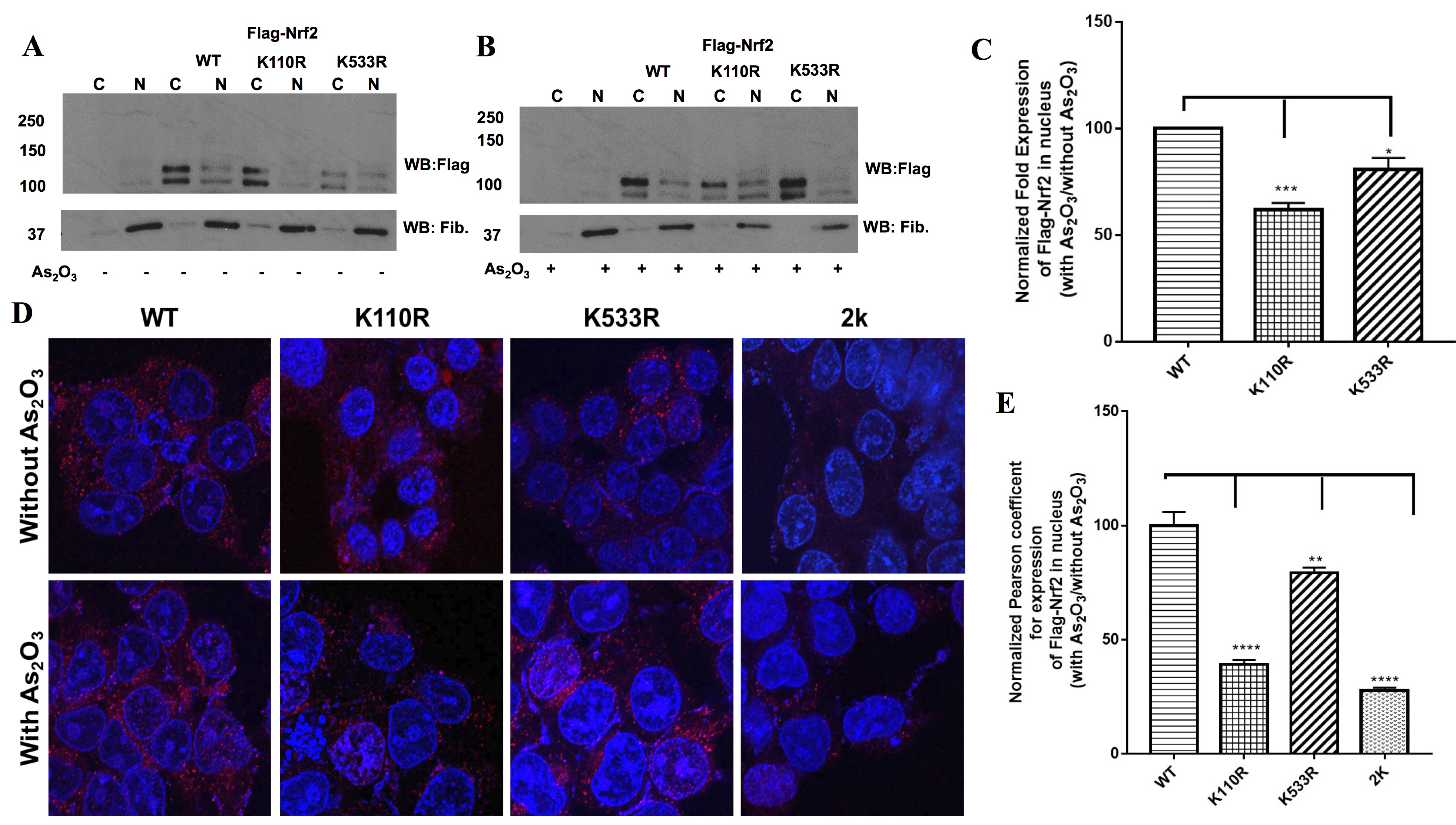Fig. 4. SUMO-acceptor lysines are needed for efficient nuclear localization of Nrf2. HEK293T cells were transfected either with the empty Flag-vector (pFLAG), or Flag-Nrf2 wild-type (WT) or mutant (K110R, K533R) and levels of Flag-tagged Nrf2 were monitored in the cytoplasmic and nuclear enriched factions with or without activation with As2O3. A. Immunoblot analysis using anti-Flag antibody on cytoplasmic (C) and nuclear enriched (N) factions for cells without activation. B. with activation by 10 ÁM As2O3 treatment for 4 hrs. Antibody against nuclear protein Fibrillarin was used to validate the enrichment of nuclear proteins in nuclear fraction. C, graphs representing the relative level of nuclear Nrf2 post activation with As2O3 compared to WT. Density of both the bands in the panel A and B with anti-Flag antibody were quantitated for Flag-Nrf2 levels in the nuclear enriched fraction, normalized by Fibrillarian. The ration of normalized value of with As2O3 over without As2O3 are plotted. Results are mean ▒S.E. (n=3). *** indicates statistical significance p<0.001 in mutants compared to wild type. C: cytoplasmic fraction, N: nuclear enriched fraction. C: cytoplasmic fraction, N: nuclear enriched fraction. D. immunofluorescence confocal microscopy analysis of Flag-hNrf2 WT or mutant protein with or without activation by As2O3 on its nuclear localization. Anti-Flag-Cy3 (red) antibody was used for detection of recombinant Nrf2 WT or mutant, Cell nuclei are painted blue with DAPI. E. Images such as those in D were used to obtain the Pearson coefficients for subcellular colocalization to determine colocalization of Flag-hNrf2 with the nucleus. Normalized values with As2O3 over without As2O3 are plotted. ** indicates statistical significance p<0.001 in mutants compared to wild type.
